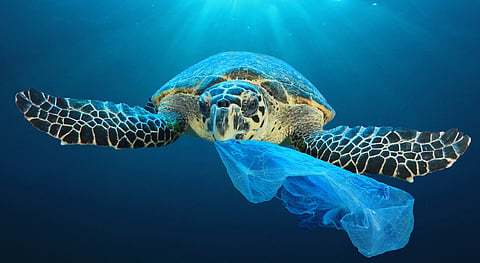

Addressing existing plastic pollution, especially in marine environments, is a critical priority due to its widespread presence and profound impacts on ecosystems, economies, and societies. This pollution stems from various sources, including land-based activities, ocean-based operations, and everyday consumer products. It encompasses single-use plastics, microplastics, and macroplastics, which accumulate in terrestrial and aquatic ecosystems. These pollutants not only degrade natural environments but also impose significant economic burdens, including cleanup and waste management costs, while disrupting industries such as tourism and fisheries by degrading coastal and marine ecosystems.
In response to these challenges, stakeholders are engaging in negotiations to develop comprehensive strategies to combat plastic pollution. Preventive measures include reducing single-use plastics, adopting sustainable alternatives, and promoting responsible waste management. Cleanup efforts are aimed at removing plastic debris from natural environments, with a particular focus on pollution hotspots and accumulation zones. Effective waste management systems, including recycling and environmentally responsible disposal methods, are being emphasized to minimise the environmental impacts of plastic waste. Public awareness campaigns play a crucial role in educating communities about the dangers of plastic pollution and encouraging behaviors that prevent further contamination.
International cooperation is essential in addressing plastic pollution effectively. Negotiators are advocating for coordinated efforts to identify and prioritise accumulation zones, particularly in marine environments. Mitigation measures, such as clean-up activities and restoration projects, are being discussed, with an emphasis on engaging local populations to ensure safe and environmentally sound practices. Sharing information on common pollution types and sources is also critical to raising awareness and preventing further damage, particularly in vulnerable areas like coastal and freshwater ecosystems.
Several countries and groups have brought forward specific proposals during treaty discussions. The EU has proposed a comprehensive approach to identifying the “main transfer channels” of plastics into the environment, pinpointing pollution hotspots, and targeting sectors most affected by existing plastic pollution. Samoa, on behalf of the Alliance of Small Island States (AOSIS), has called for legally binding commitments to address legacy plastic pollution, particularly for Small Island Developing States (SIDS). They emphasise tailored solutions supported by financial and technological assistance to address the unique vulnerabilities of these regions.
India has advocated for thorough assessments of existing plastic pollution, mobilisation of financial resources, and technology transfer to support developing countries in meeting their commitments. Thailand has emphasised multi-stakeholder cooperation, alongside monitoring, research, and investigation to better understand and address pollution. Chile has stressed the importance of international collaboration, adherence to international law, and sustainable practices to combat pollution effectively. Vietnam has highlighted the need for tailored solutions for geographically disadvantaged and vulnerable states, while Iran has emphasised the responsibility of developed countries to take the lead in addressing legacy pollution.
Conversely, some nations have proposed changes to the existing provisions. Kazakhstan has deleted references to “accumulation zones and hotspots,” while Russia has opposed including mentions of chemicals and polymers in trade-related contexts. However, Russia has supported remediation efforts for existing pollution. Kuwait has suggested removing clauses addressing emissions regulation during the production phase.
Addressing existing plastic pollution requires a multifaceted approach, combining preventive measures, cleanup activities, waste management improvements, public awareness campaigns, and international collaboration. These efforts aim to mitigate the adverse effects of plastic pollution, promote sustainable practices, and provide tailored solutions for vulnerable regions. By engaging all stakeholders and adopting a coordinated global response, the treaty negotiations seek to build a framework that effectively tackles the challenges posed by legacy plastic pollution while fostering long-term environmental and societal resilience.
To download the whole report, click here.
This is a click to zoom map. View the larger image by clicking on it